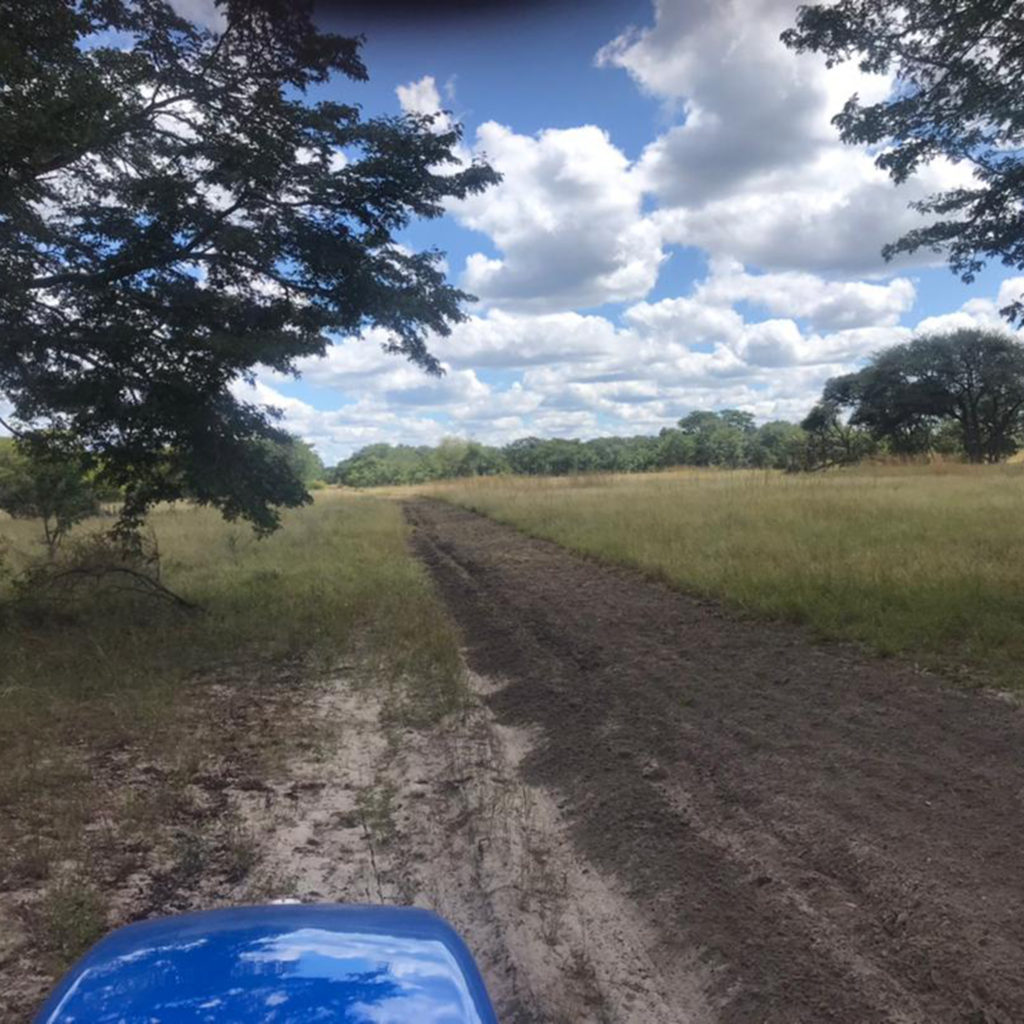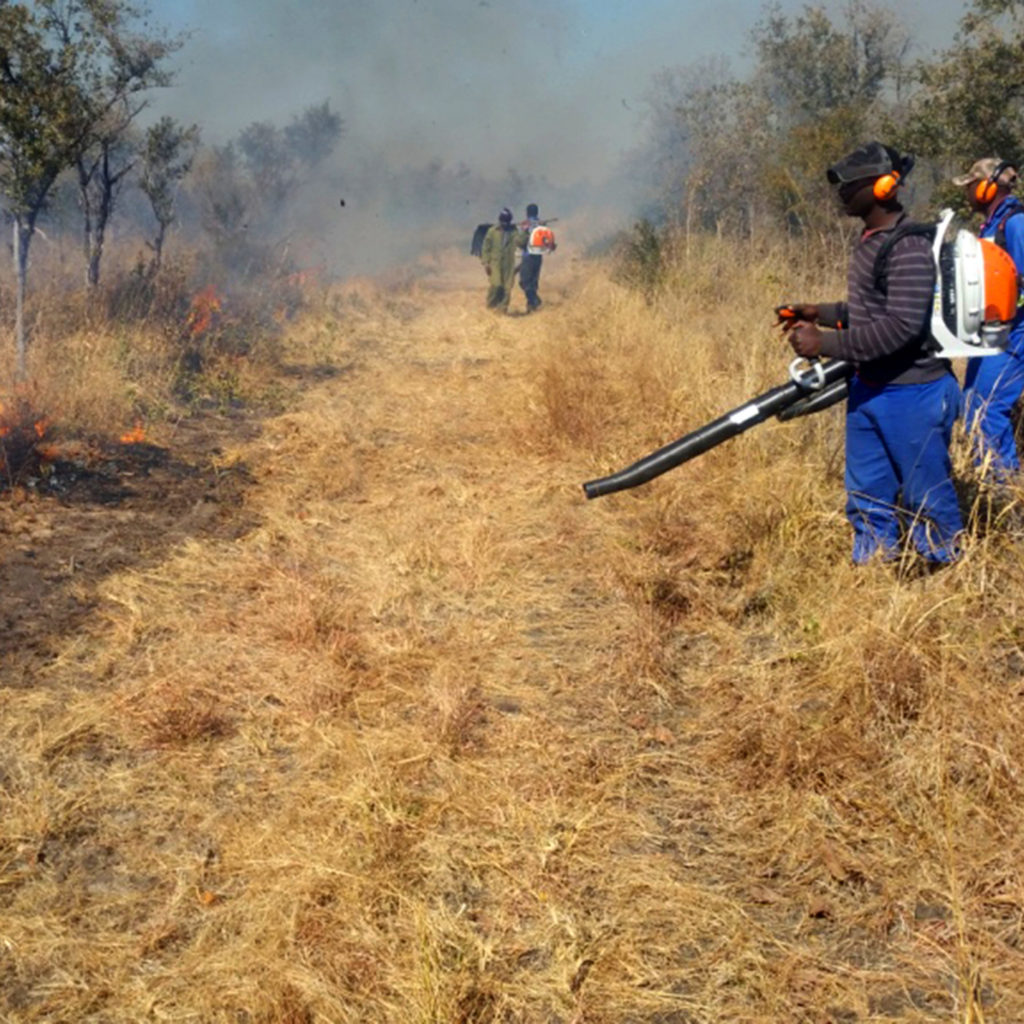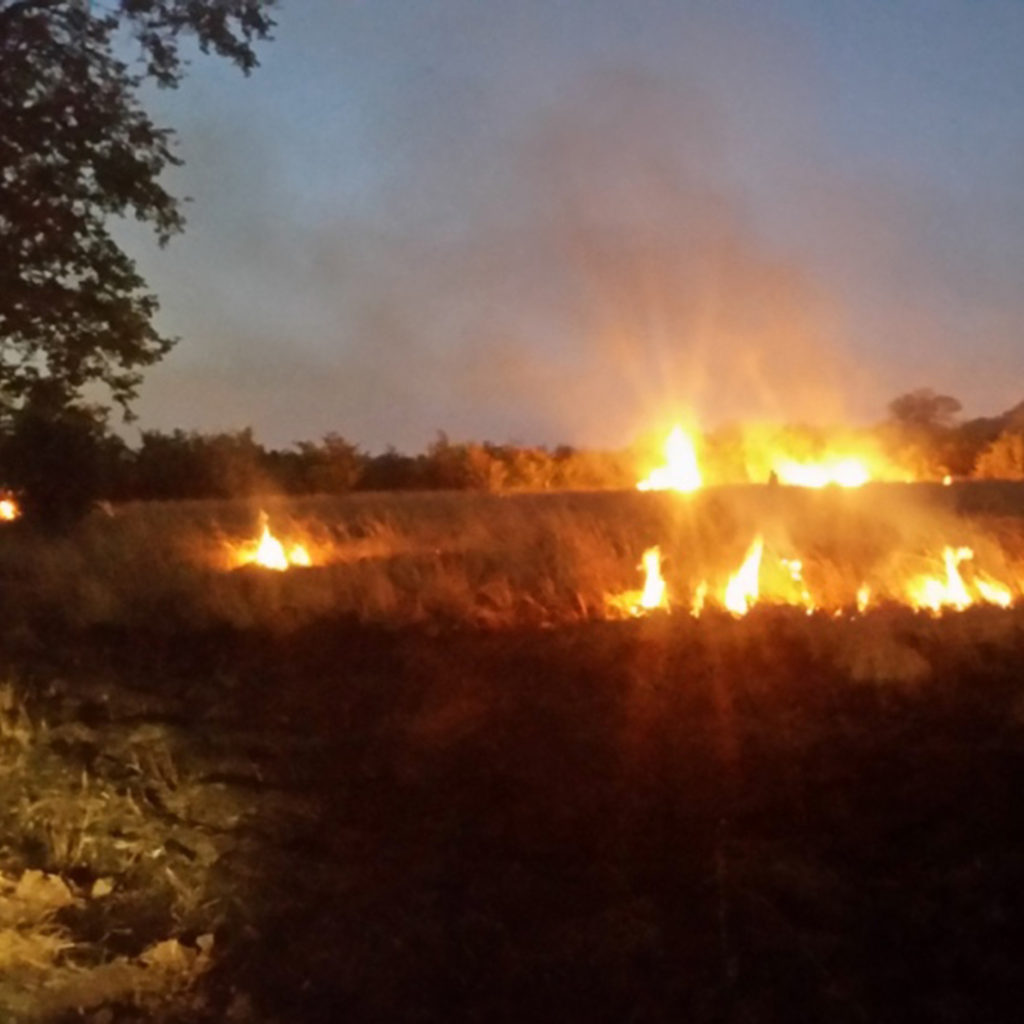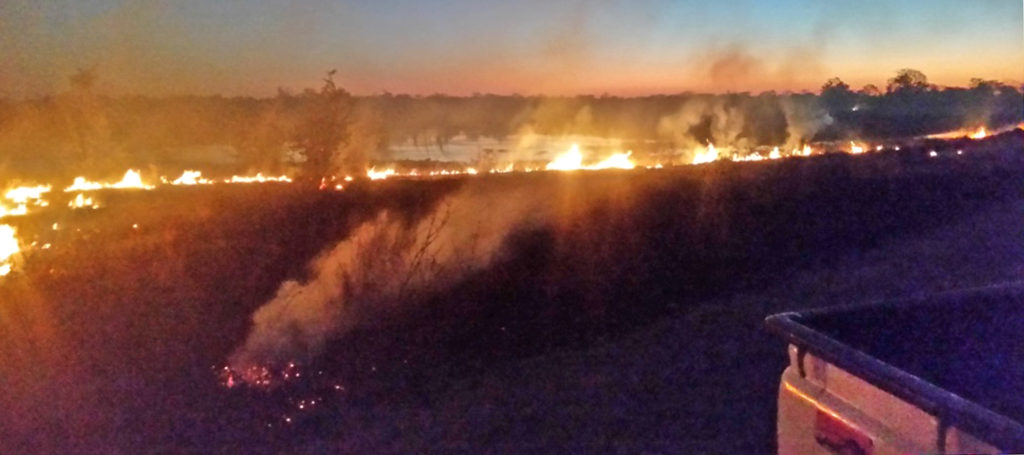


In April and May, at the end of the rainy season, most areas in the park have long grass and plentiful grazing. It is essential we protect the natural flora and keep this potential food source for animals safe from bushfires.
There is a short window of time in which to burn firebreaks. Work starts in May and must be completed by the end of June. Earlier and the veld is too green and wet to burn, especially if we have been lucky enough to have an occasional late April shower. Later burning becomes too risky as strong winds and dry grass means fires can easily run out of control. For this reason, the burns are often undertaken at night when the wind drops.
Firebreaks are not an easy task. First the ground must be cleared of rocks, roots, branches, and other obstacles that may damage precious equipment. Then tractors are used to harrow two lanes about 70 metres apart. The area between these is control burned, and flanked by a clear track on either side, the resulting firebreak is about 80 metres wide. Extensive use of Blowers helps keep the burns under control.
A network of fireguards throughout the park covers vast distances over very rough terrain. Upkeep of these firebreaks is undertaken annually. As well as necessary fuel and oil for tractors, vehicles, and maintenance of the blowers, the workers, who do a fantastic job in hot, dirty conditions, must be fed and paid. We cannot afford to compromise on this important annual event.
